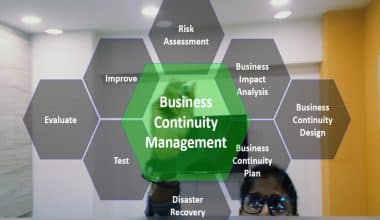Conflict is a natural part of life. It is inevitable and unavoidable. Whether it is between two individuals or two countries, it is essential to learn the most effective strategies for resolving conflicts. In this blog article, we will discuss the top effective strategies for conflict resolution. We will cover all the basics, such as what are the basic strategies for resolving conflicts, what are the ways to resolve conflict, what are the types of conflict resolution, what are the 3 C’s for resolving a conflict, tips for identifying and resolving conflict, and effective strategies for resolving conflict.
What is Conflict Resolution?
Human interaction can sometimes lead to conflict, hence conflict resolution strategies are required for response and resolution. Conflict resolution or negotiation is a method for opposing parties to reach an agreement that leaves everyone relatively satisfied.
Sometimes the person who resolves a conflict is a neutral party or mediator, while other times it is someone involved in the conflict who seeks a solution from an outside perspective.
The capacity to resolve conflicts is sometimes regarded as a leadership characteristic. Many organizations value those who can detect disputes, acknowledge opposing viewpoints, and reach a consensus. They increase the likelihood that personal conflicts will be set aside so that work can proceed.
Here are some of the most typical reasons for workplace conflict:
- Different personalities or points of view
- Unresolved issues from the past
- Lack of communication skills and a sense of competition
- Uncertainty about tasks or functions
What are the Basic Strategies for Resolving Conflict?
The basic strategies for resolving conflict include negotiation, arbitration, and mediation. Negotiation is a process of communication between two parties in which they discuss their differences in order to reach an agreement. It is a give-and-take process and requires both parties to work together to reach a mutually beneficial outcome.
Arbitration is a form of dispute resolution in which an impartial third party (the arbitrator) hears arguments from both sides and makes a decision. This decision is binding and cannot be appealed. Mediation is a process in which an impartial third party (the mediator) assists the two parties in reaching an agreement. The mediator facilitates a discussion between the parties and helps them come to a consensus.
What are the Ways to Resolve Conflict?
There are several ways to resolve conflict. It is important to understand the different approaches to conflict resolution in order to make the best decision for the situation. The primary ways to resolve conflict include negotiation, arbitration, and mediation.
Other strategies for resolving conflict include collaborative problem-solving, negotiation, mediation, and litigation. Collaborative problem-solving is a process of working together to identify and solve a problem. Negotiation is a give-and-take process in which both parties work together to come to an agreement. Mediation is a process in which a neutral third party assists the two parties in reaching an agreement. Litigation is a process in which a court hears arguments from both sides and makes a decision.
What are the 3 C’s for Resolving a Conflict?
The 3 C’s for resolving a conflict are communication, compromise, and commitment. Communication is essential in resolving conflicts. It is important to listen carefully to the other person’s point of view and express your own. Compromise is essential in resolving conflicts. Both parties need to be willing to make concessions in order to reach an agreement. Commitment is also important in resolving conflicts. Both parties need to be committed to the process and the outcome in order to have a successful resolution.
Tips for Identifying and Resolving Conflict
It is important to identify and resolve conflicts in order to maintain healthy relationships. Here are some tips for identifying and resolving conflicts:
- Listen carefully to the other person’s point of view.
- Express your own point of view clearly and calmly.
- Try to understand the other person’s perspective and feelings.
- Identify the underlying issue and try to come up with a solution that is agreeable to both parties.
- Work together to come up with a mutually beneficial solution.
- Make sure to follow through on any commitments made during the resolution process.
Top 5 Strategies For Resolving Conflict
#1. Avoid Ignoring Conflict
If you despise dealing with conflict, it may be tempting to bury your head in the sand and pretend it doesn’t exist, expecting it would go away on its own. While this can happen on occasion, the truth is that the vast majority of the time, it will exacerbate the condition. Ignored disagreements tend to fester over time and resurface at inconvenient times, so do your team a favor and handle issues as they arise, nipping a potentially poisonous situation in the bud as soon as you identify it.
#2. Identify the Problem
When dealing with a conflict between two members of your team, it’s critical that you get all of the information. Meet with each person involved to determine the exact nature of the problem. How does each person see the situation? What are the unmet needs? What do each party consider to be an appropriate resolution? Make sure that both parties realize that you are serving as an impartial mediator and that they can feel safe sharing sensitive information with you.
#3. Bring all parties involved together for a discussion.
After you’ve had a chance to speak with each of the parties separately, convene them in a meeting to work out their disagreements in a neutral setting. This is a time for brainstorming, active listening, and being open to diverse points of view – the goal is to get a common understanding of what the problem is, what part each member is playing in the conflict, and what some viable solutions are.
#4. Locate a Solution
After both sides have had an opportunity to examine the situation, it is time to determine what a satisfactory resolution would be – and how to get there. Ideally, by this step, both sides will understand the other’s perspective, and the conflict can frequently be resolved simply by facilitated, open dialogue.
However, if the problem demands further resolution, you must intervene and assist them in negotiating a reasonable solution. This stage may take some time and effort because it takes both parties to set aside their differences and preferences in order to establish some common ground to work towards (which may involve not getting everything they want out of the situation). Then, collaborate with both persons to develop a concrete list of tasks that will result in the solution being realized.
#5. Continue to monitor and investigate the conflict
Just because a solution has been identified and treated does not indicate that it will vanish. It is your obligation as a manager to check in with both parties to ensure that the conflict has been resolved and that the measures suggested to seek a solution are being followed. If everything appears to be going well, remember to pause and observe from time to time to see if things are truly going smoothly or if there are still residual tensions beneath the surface that need to be addressed.
If it is evident that the solution did not work or was not the best option for the circumstance, make a resolution to work with both parties to reset expectations, explore other alternatives, and continue their communication in order to establish a good and healthy work environment.
How to Use Conflict Resolution at Work
Follow these measures to assist find an amicable solution to disagreements that could negatively impact your company’s productivity:
#1. Recognize the conflict
Nobody enjoys conflict, so it may be tempting to pretend it doesn’t exist or that it will go away on its own. While this may occur, ignoring an issue will often exacerbate it. Ignored disagreements fester over time and resurface at inconvenient moments. To avoid a potentially dangerous situation, managers should address issues as they arise.
#2. Identify the issue
Determining the root cause of the conflict will help you understand how the problem arose in the first place. Both parties must agree on the issue and discuss needs that are not being satisfied on both sides. Gather as much information as you can about each side’s outlook. Continue to ask questions until you are certain that all parties involved comprehend the situation. You should assist the parties in remaining focused on the matter at hand while avoiding personal emotions during the session. Discuss the issue professionally without tying it to a specific person or organization.
#3. Convene on neutral ground
Clarifying a problem or negotiating a resolution should take place in a setting that seems secure and neutral to all parties. A space like this also allows everyone involved to communicate openly. Choose neither party’s office or a neighboring place since it implies one side has greater influence or power than the other.
#4. Allow everyone to have a say
Allow each party an opportunity to express their thoughts and ideas about the subject. Give them equal time to express themselves. Accept a constructive attitude in the meeting and, if required, establish ground rules. Encourage everyone concerned to openly communicate their ideas, understand the origins of the conflict, and start looking for solutions. They may find it easier to interact if they have a common purpose of meeting company objectives.
#5. Reach an agreement on a solution
Take the time to investigate the situation after listening to both parties. Do not pass judgment or reach a conclusion based on what was said. Investigate more to learn more about the events, parties involved, difficulties, and how individuals are feeling. Also, look for any underlying conflict sources that may not be obvious at first.
Determine which choice will be most beneficial to everyone concerned after visiting each conceivable alternative. Each participant should acknowledge that the suggested solution is the best one available.
#6. Determine each side’s contribution to the answer.
Both parties have had their say in negotiating a suitable settlement by this point. However, in order for it to be effective, each side must believe that the solution is right and equitable. Ideally, both parties will now comprehend the other’s point of view. Often, the conflict can be handled simply by facilitating open communication. This stage takes some time and effort as both parties attempt to put aside their differences and preferences in order to identify common ground on which to work toward a resolution. Then, collaborate with both parties to develop a plan of action to reach the agreed-upon resolution.
What to Do After Conflict Has Been Resolved
Once a conflict has been resolved, it is important to ensure that the resolution is carried out. Here are some tips for following through after a conflict has been resolved:
- Follow through on any commitments made during the resolution process.
- Celebrate the resolution. It is important to recognize the accomplishment of resolving the conflict.
- Reflect on the process. It is important to reflect on the process and identify any areas where it could have been improved.
- Document the resolution. It is important to document the resolution and any commitments that were made. This will help to ensure that the resolution is carried out.
- Learn from the experience. It is important to learn from the experience and use it to resolve future conflicts.
Conclusion
Conflict is an inevitable part of life. It is important to understand the different strategies for resolving conflict in order to make the best decision for the situation. The primary strategies for resolving conflicts include negotiation, arbitration, and mediation. Other approaches include collaborative problem-solving, negotiation, mediation, and litigation. It is also important to use effective strategies for resolving conflicts, such as identifying the underlying issue, focusing on the future, being flexible, and communicating openly and honestly. Finally, it is essential to follow through on any commitments made during the resolution process, celebrate the resolution, reflect on the process, document the resolution, and learn from the experience.
Conflict resolution is a difficult but essential process. It is important to learn the most effective strategies for resolving conflict in order to maintain healthy relationships. We hope this blog article has provided you with a better understanding of the strategies for resolving conflict.
Related Articles
- IRS Attorney: Salary, Jobs, Fees, Best Options & All You Need
- BEST ONLINE MANAGEMENT COURSES: Best Online Courses)
- The Importance of Resources for the Success of Any Business
- Business Model: Definitions, Examples, and Types
- WHAT IS A BLIND TRUST? Pros and Cons






